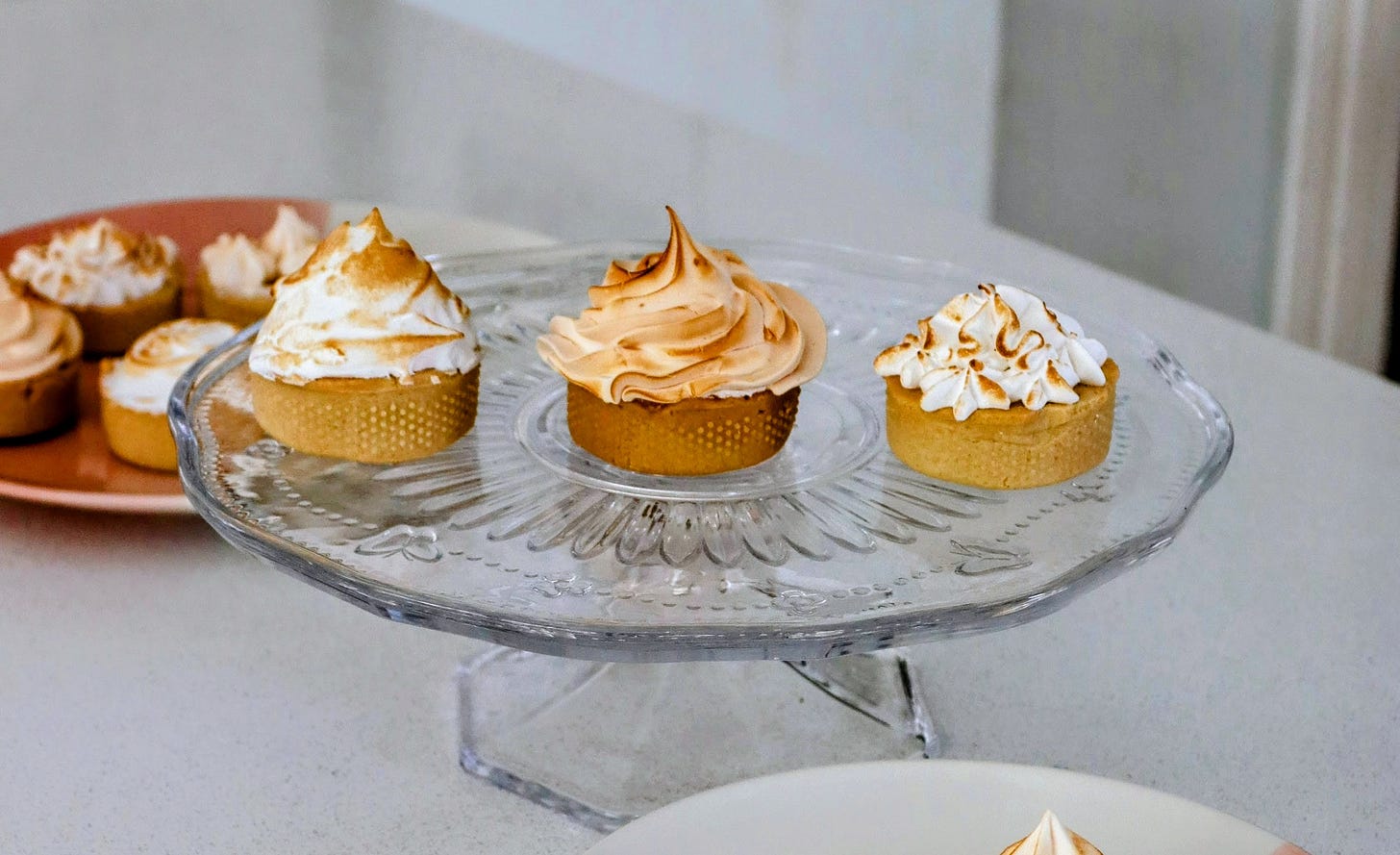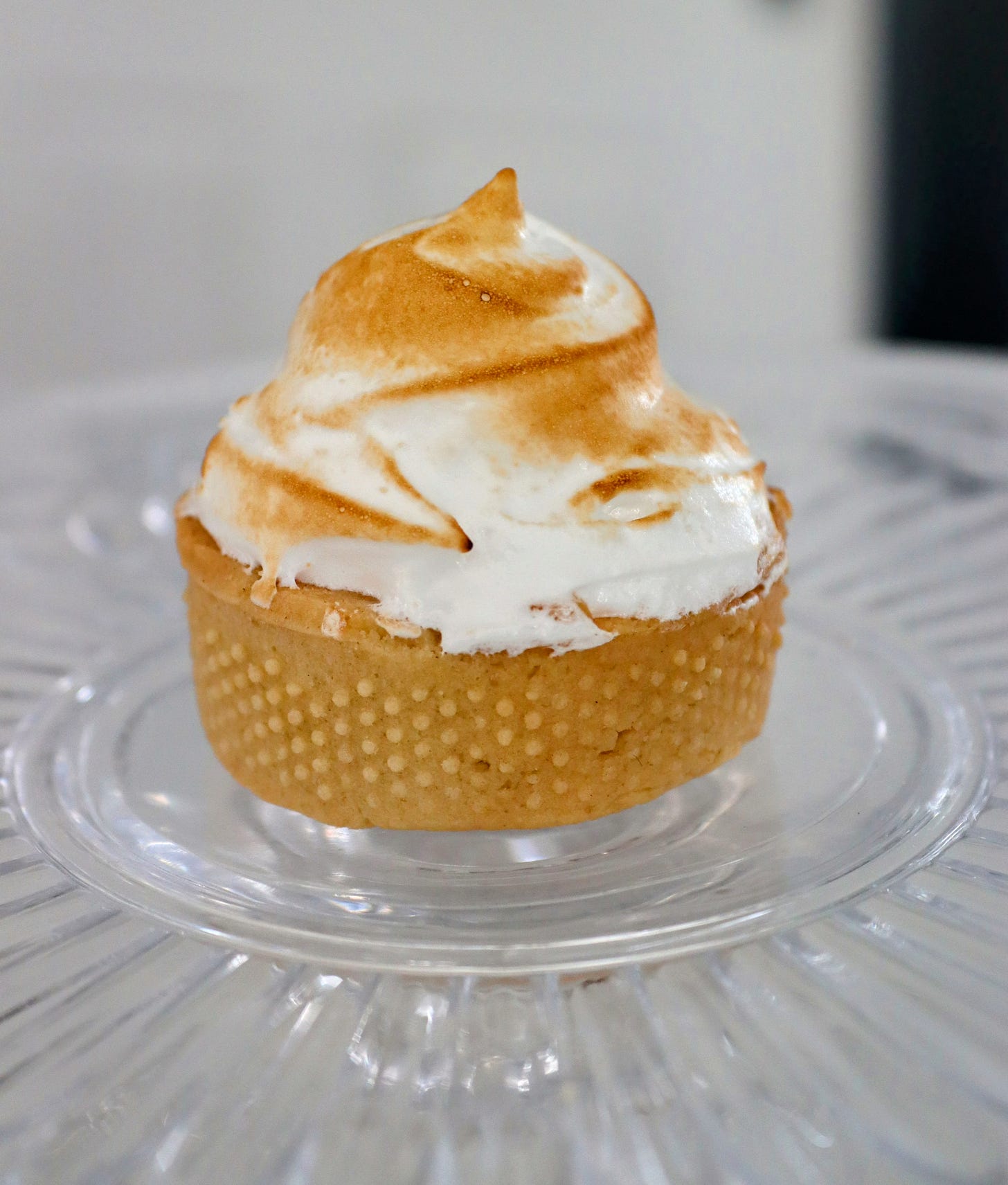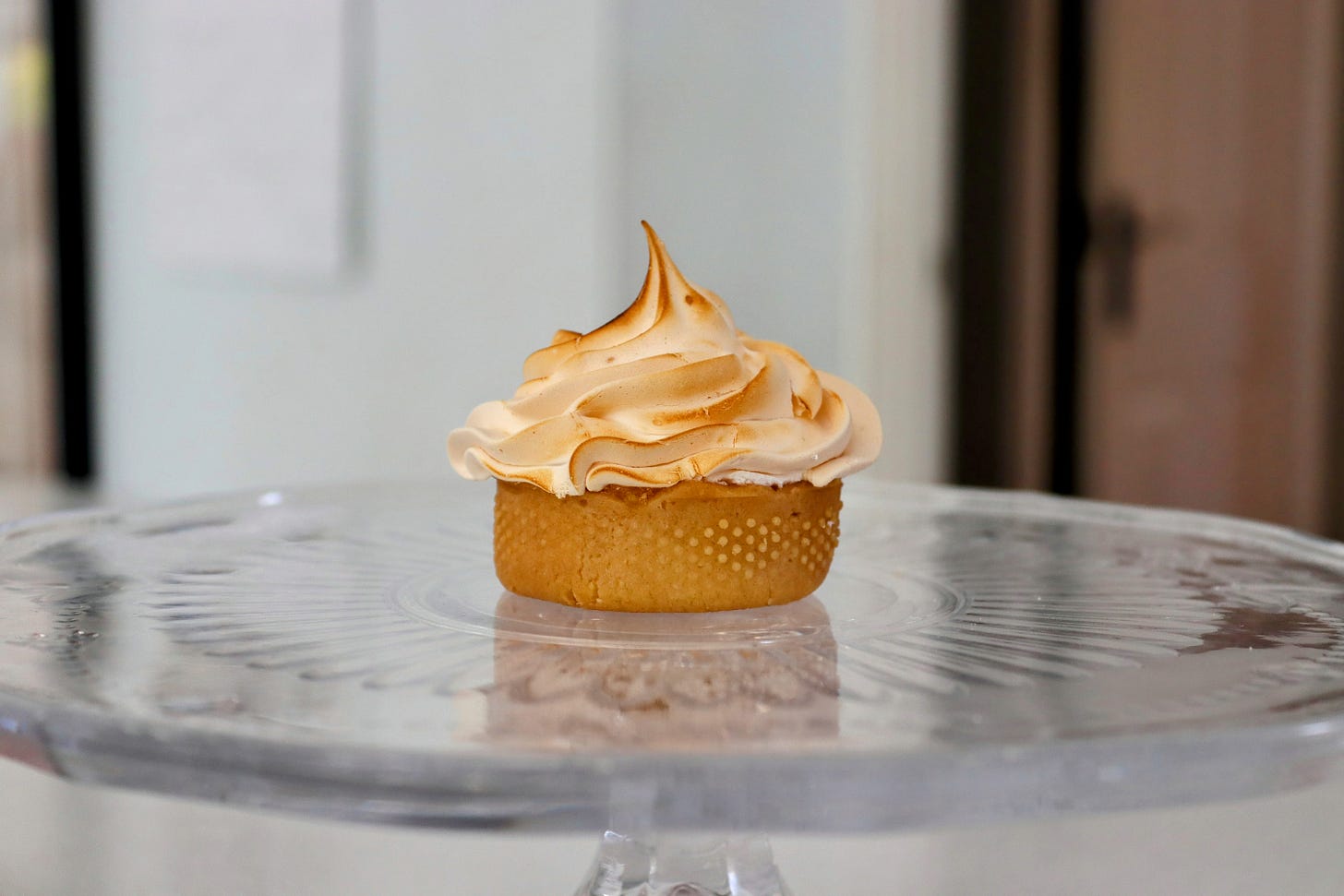Lemon Meringue: Which type of meringue works best?
French, Italian or Swiss?
For our first experiment, let’s start with a true classic: The Lemon Meringue.
My question for this week is, which type of meringue works best?
Amsterdam based (but French trained) Meike Schaling of Petit Gateau says Italian, Bake Off’s Prue Leith goes French and Nicola Lamb of the incredible Kitchen Projects says Swiss in her book Sift.
Let’s give it a go shall we?
The Lemon Meringue Experiment
To ensure this is a true test of the meringue, I have kept all other variables constant. I have used the same pastry, lemon curd, tart size, even piping nozzle. These are 6cm tartlets and the recipe for the curd and pastry is from the aforementioned Petit Gateau.
Before each experiment, I made sure my mixer was super clean, smearing with a tiny dash of lemon juice. Lots of pastry chefs say you don't need to do this, but I find my meringue is more stable, thanks to the acid from the lemon juice.
What are we looking for? Our testing metrics will be; ease of use, aesthetics, texture and, of course, flavour.
A note on the forth meringue, swiss-franc. (Yes, there are four types!) You simply warm the sugar in the oven before spooning into your whisking eggs. I decided to leave this one out because it’s quite similar to French.
French
Ingredients used:
50g egg white
100g caster sugar
French is probably the most common meringue (in fact, it is sometimes known as ‘common meringue’) and it is certainly the easiest. You whip your egg whites in a mixer and slowly spoon in caster sugar until thick and glossy. Then pipe onto the tart to bake for about 18 minutes.
As an alternative, you can make meringue kisses to place on the tart later. Aesthetically, this can be very pleasing as you can pipe with different shaped nozzles or even add coloured stripes. It does compromise on texture though, as kisses tend to be more crunchy and chewy without a soft middle.
Result:
There’s a reason this is the meringue we traditionally use for our Lemon Meringues in the UK – it’s stable and holds a piping shape well. It tastes delightfully marshmellowy with a beautiful, chewy golden crust. You technically don’t need a blow torch, but pyromaniac over here had to add a little more caramelisation post bake. I just love that smell, like smores on a campfire.
Italian
Ingredients used:
100g sugar
25ml water
45g egg white
A little more tricky and you need a sugar thermometer. Place your sugar and water in a small saucepan on the hob to create a syrup. Once your thermometer reaches 118 degrees, slowly pour the syrup into whisking egg whites - a slow whisk while pouring to avoid hot sugar syrup splashes! Then whisk at a high speed until the meringue is cool, thick and glossy. As the sugar cooks the egg whites, there is no need to bake this meringue, and you can finish it all off with a blow torch to add caramelisation. Yippee!
Result:
I had only ever used Italian meringue to make macarons before (which it does very well), but its smooth, velvety texture and refined flavour works well for a Lemon Meringue too.
The only downside of an Italian meringue is that it’s so soft, I found the piping doesn’t hold. I had to palette knife it into snowy domed peaks in the end, which does look rather like the most awesome ski resort, but admittedly lacks finesse from an aesthetics perspective.
Swiss
Ingredients used:
50g egg white
100g caster sugar
The most tricky of the three. Place your egg whites and caster sugar in a bain-marie, before whisking like crazy. Once it hits 70 degrees on your sugar thermometer, transfer to your mixer to whisk at a high speed for ten minutes. As with Italian meringue, this is cooked, so no need to bake and can be finished off with a blow torch.
Result:
I have never made Swiss meringue before, but I must have done something wrong. The result wasn’t pillowy and cloud like as you would expect from a meringue. It was more just sticky. Also, despite using a similar egg white to sugar ratio, it was weirdly more sickly sweet than the other two. It did hold piping very well. The bonfire ripples contrasted marvellously with the white meringue beneath. But it lacked the height and flamboyance I think so vital in a good Lemon Meringue.
The Winner!
French
While the Italian tasted fabulous, like a burnt marshmellow mousse for grown-ups, there is something wonderfully nostalgic about the traditional baked French meringue. It’s what my gran and mum served and feels like what a Lemon Meringue ‘should’ be. With its golden crust and big swirly piping, it definitely looked the most enticing!
Which meringue do you like best?
Until next time…







French meringue all the way. I think Swiss is used mainly in dry meringues, like kisses.
Well I’ve learned a few things about merengue here Shell.